Brief History of Dozers
The bulldozer (or dozer) is a mechanical means originated in the early 20th century, evolving from farm tractors fitted with metal blades to push earth and debris The first tracked bulldozer was developed in the early 1920s by Benjamin Holt, leading to the founding of Caterpillar Inc. The first model was equipped with a steam engine, which was rather bulky and also impractical, while the first one with a diesel engine was introduced eight years later, in 1931. Afterwards, Caterpillar and other manufacturers introduced tracked dozers, which became widely used in construction, mining, and military operations.
The spread came at the end of World War II, mainly to clear the destroyed cities of Europe from rubble; the first models were small and wheeled, while those used after the war were huge, powerful and equipped with tracks like tanks. Hence the birth of the armoured bulldozer.
Over time, dozers evolved with hydraulics, advanced control systems, and GPS guidance, making them more precise and efficient for earthmoving tasks.
Types of Dozers
Bulldozers, or dozers, are classified based on mobility, size, and functionality. Each type is engineered for specific terrains and applications, ensuring optimal performance in construction, mining, and land-clearing projects. Below is a detailed breakdown of the main bulldozer types:
Crawler Bulldozers (Track Dozers)
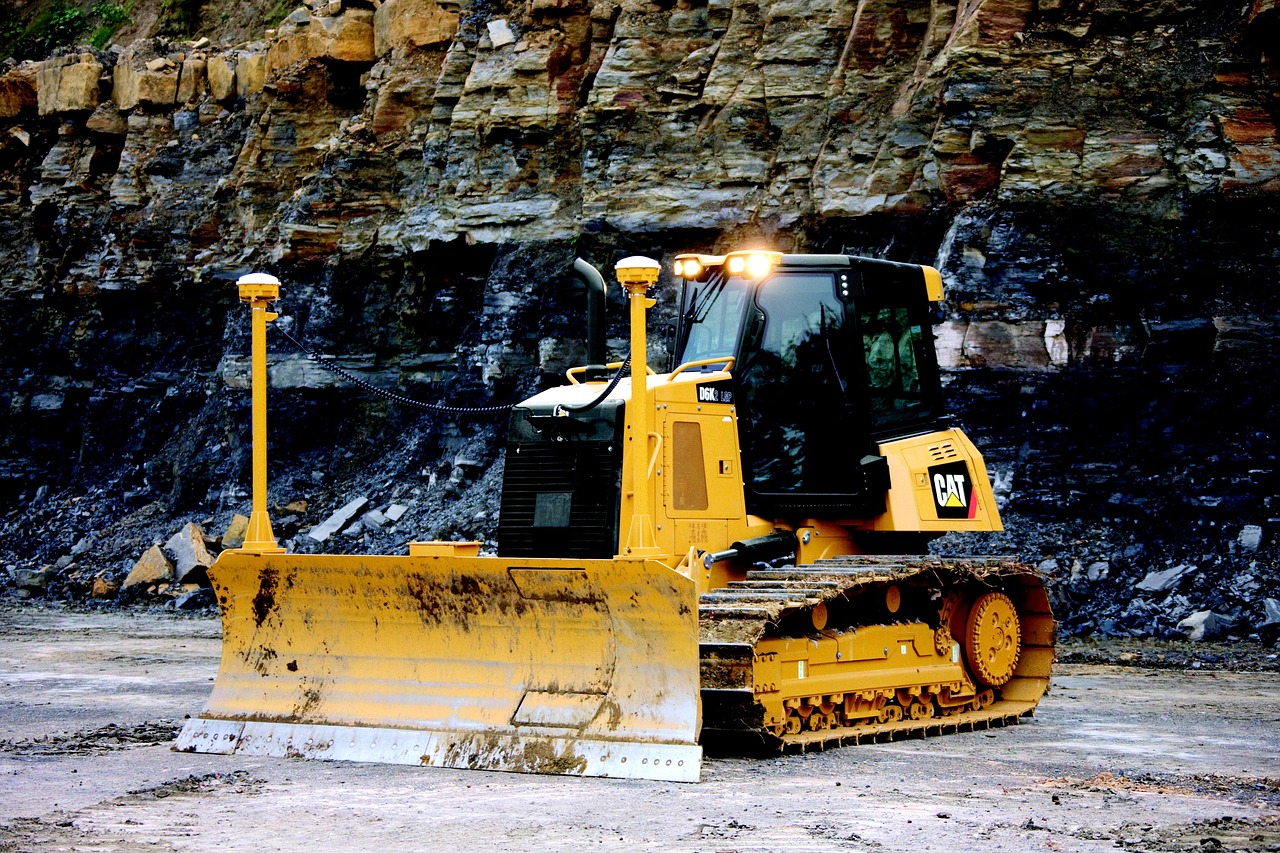
Crawler bulldozers run on continuous tracks instead of wheels, providing stability and traction on uneven, muddy, or rocky terrain. These are the most common bulldozers used in heavy-duty construction and mining operations. The use of tracks offers a crucial advantage: they reduce ground pressure by spreading the machine’s weight over a larger surface area. This prevents the dozer from sinking into soft ground materials like sand, mud, or snow, making it ideal for jobsites where wheeled machines would struggle.
Crawler dozers come in a wide range of sizes, each suited to different applications, from light grading to large-scale earthmoving. While specifications vary by manufacturer, typical size classes can be broadly defined as follows:
-
Small Crawler Dozers
Ideal for residential work, landscaping, and light construction-
Operating Weight: 7–9 tonnes
-
Power Output: 55–80 kW
-
-
Medium Crawler Dozers
Used for road building, site prep, and general-purpose grading-
Operating Weight: 14–30 tonnes
-
Power Output: 100–200 kW
-
-
Large Crawler Dozers
Designed for mining, quarrying, and major infrastructure projects-
Operating Weight: 40–110 tonnes
-
Power Output: 260–660 kW
-
This range ensures that there’s a crawler dozer suited to nearly every type of heavy-duty job. When selecting a machine, contractors typically consider not only size and power, but also specific factors such as undercarriage type, blade configuration, and the terrain the dozer will operate on.
Wheeled Bulldozers

Unlike track dozers, wheeled bulldozers use rubber tires instead of tracks. They offer better speed and maneuverability, making them ideal for urban and roadwork applications. Wheeled dozers can travel up to three times faster than crawler dozers, making them ideal for jobsites where equipment needs to move quickly between working areas. Their articulated steering systems also contribute to greater agility and tighter turning radii, especially useful in confined or urban environments.
However, this increase in mobility comes with trade-offs. Unlike tracked machines, which distribute their weight across a larger surface area, wheeled dozers apply their weight at four concentrated points, one for each wheel. This results in reduced ground pressure, limiting their performance on soft or uneven terrain such as mud, sand, or loose gravel. Additionally, wheeled dozers lack the pushing power and traction of track-driven machines, making them less suitable for heavy-duty earthmoving tasks that require high torque and ground engagement.
As a result, wheeled dozers are best deployed on firm, well-maintained surfaces and in operations where transport speed and manoeuvrability outweigh the need for brute pushing force.
-
Key Advantages:
- Rubber Tires: Enhanced mobility, lower ground pressure.
- High-Speed Travel: Faster movement between sites vs. tracked models.
- Hydraulic Blade Control: Precise leveling, pushing, and grading.
- Operator Comfort: Enclosed cab, advanced controls, reduced vibration.
- Surface-Friendly: Ideal for paved or compacted surfaces with minimal damage.
-
Common Applications:
- Urban construction and road building
- Material stockpile management (aggregates, coal, ore)
- Land clearing and backfilling on firm terrain
- Large industrial yards and ports
- Snow removal on paved surfaces
- Surface mining support and cleanup
Wheeled bulldozers are a smart alternative when your job demands mobility, speed, and surface care. They won’t replace tracked machines for the toughest terrain, but in the right environment, they offer exceptional efficiency and lower operational friction. As construction sites become more time-sensitive and urbanized, their relevance is only growing.
Mini (Compact) Bulldozers
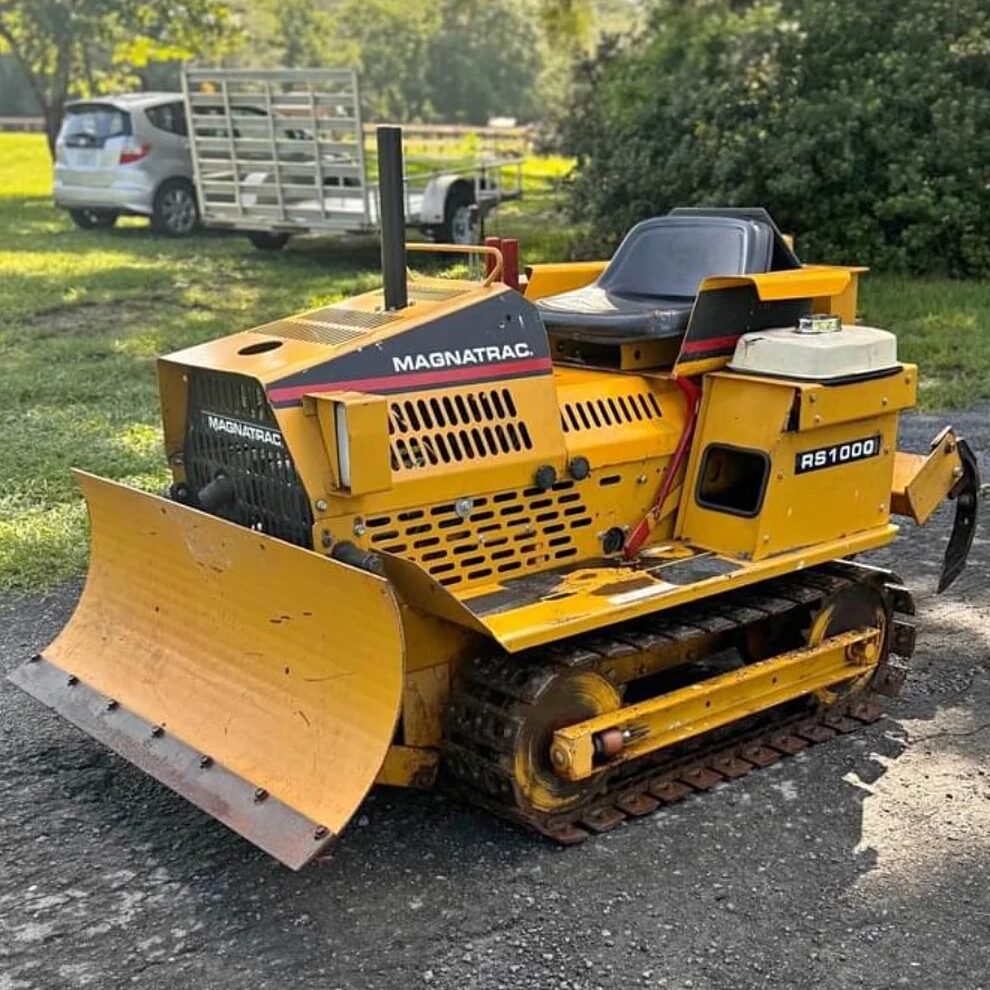
Mini bulldozers are smaller and more maneuverable, designed for tight spaces and precision grading in confined or urban environments. Despite their smaller size, these machines are highly versatile and play a critical role in residential construction, landscaping, utility work, and light site preparation.
Mini dozers are typically equipped with rubber or small steel tracks, providing solid traction while minimizing ground disturbance, ideal for working on delicate surfaces like lawns, paved areas, or finished subgrades. Their light weight also makes them easier to transport between jobsites using standard trailers.
-
Key Advantages:
- Compact Size: Allows access to narrow jobsite areas where larger machines can’t operate.
- Lower Ground Pressure: Minimizes damage to finished or sensitive surfaces.
- Ease of Transport: Lightweight and trailer-friendly for rapid deployment.
- Operator-Friendly Controls: Designed for intuitive use, often with advanced technology integration.
-
Typical Specifications:
- Operating Weight: 3 to 7 tonnes
- Power Output: 30 to 55 kW
While mini bulldozers lack the raw pushing power of larger models, their ability to work in restricted areas and perform fine grading or backfilling tasks with high precision makes them a valuable asset on many types of job sites. They’re especially popular with contractors handling smaller-scale or detail-oriented projects where accuracy, agility, and minimal site disruption are key.
Swamp (Low Ground Pressure) Bulldozers
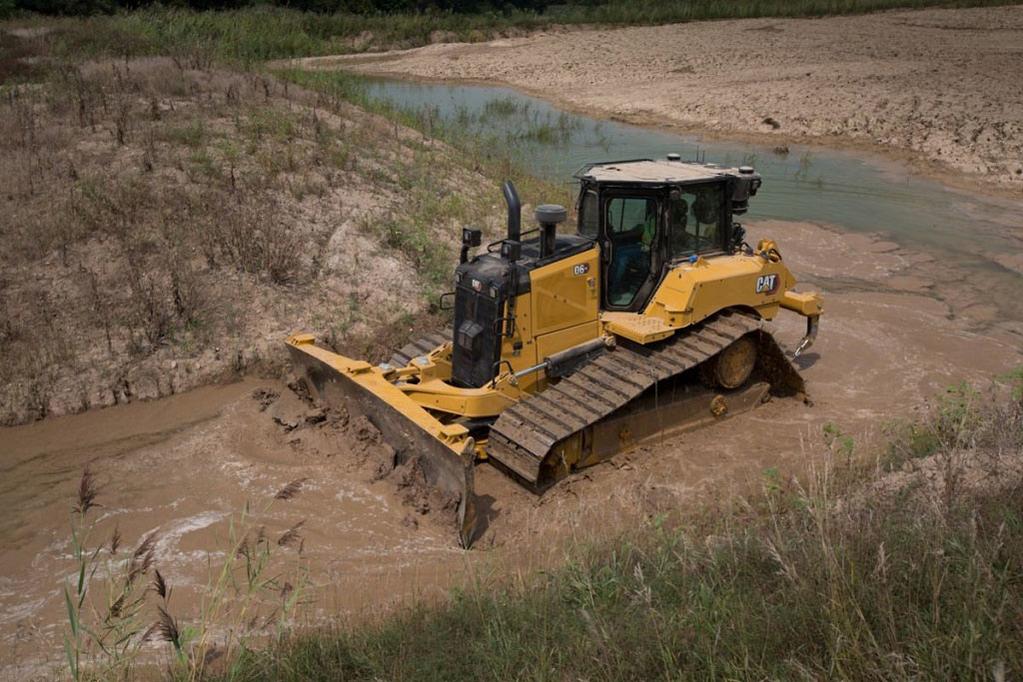
Swamp dozers, also known as low-ground-pressure (LGP) dozers, have wider tracks to distribute weight over a larger surface area. As the name suggests, ‘swampies’ are dozers made or modified to work in swampy, boggy or wet conditions where standard dozers would struggle or become immobilized.
Generally, this will involve the provision of extra-wide swamp tracks or LGP (low ground pressure) tracks with triangular or arc-style shoes which further distribute the dozer’s weight and create buoyancy.
Other modifications for use in the wet can include long track frames, a wider machine gauge and the use of waterproof connectors, new relays and injection-moulded instruments.
The defining feature of a swamp dozer is its extra-wide tracks, which significantly increase the machine’s surface contact area. This design dramatically reduces ground pressure, allowing the dozer to “float” over soft, waterlogged, or silty surfaces without sinking.
-
Key Features:
- Wide LGP Tracks: Typically much broader than those on standard crawlers—sometimes double the width—to spread the machine’s weight over a larger area.
- High Flotation Undercarriage: Designed to minimize soil disturbance and allow movement through swamps, wetlands, or snow-covered areas.
- Corrosion-Resistant Components: Often equipped with sealed undercarriages and water-resistant components to operate in submerged or muddy environments
- Reduced Ground Pressure: As low as 3.5–5.5 psi, compared to 7–10+ psi for standard crawler dozers.
-
Typical Applications:
-
Pipeline installation through wetlands
-
Levee and canal construction
-
Peat bog and muskeg clearing
-
Environmental reclamation and dredging support
-
Soft ground forestry access roads
-
-
Typical Specifications:
- Operating Weight: 18 to 50 tonnes
- Power Output: 120 to 350+ kW
- Track Width: 760 mm (30 in) to 1,100 mm (43 in) or more
While swamp dozers excel in extremely soft terrain, they are not optimized for hard or rocky surfaces due to their specialized undercarriage and wider footprint. They’re typically deployed for niche use cases where access is otherwise impossible for standard earthmoving equipment.
High-Lift (Elevated Sprocket) Bulldozers
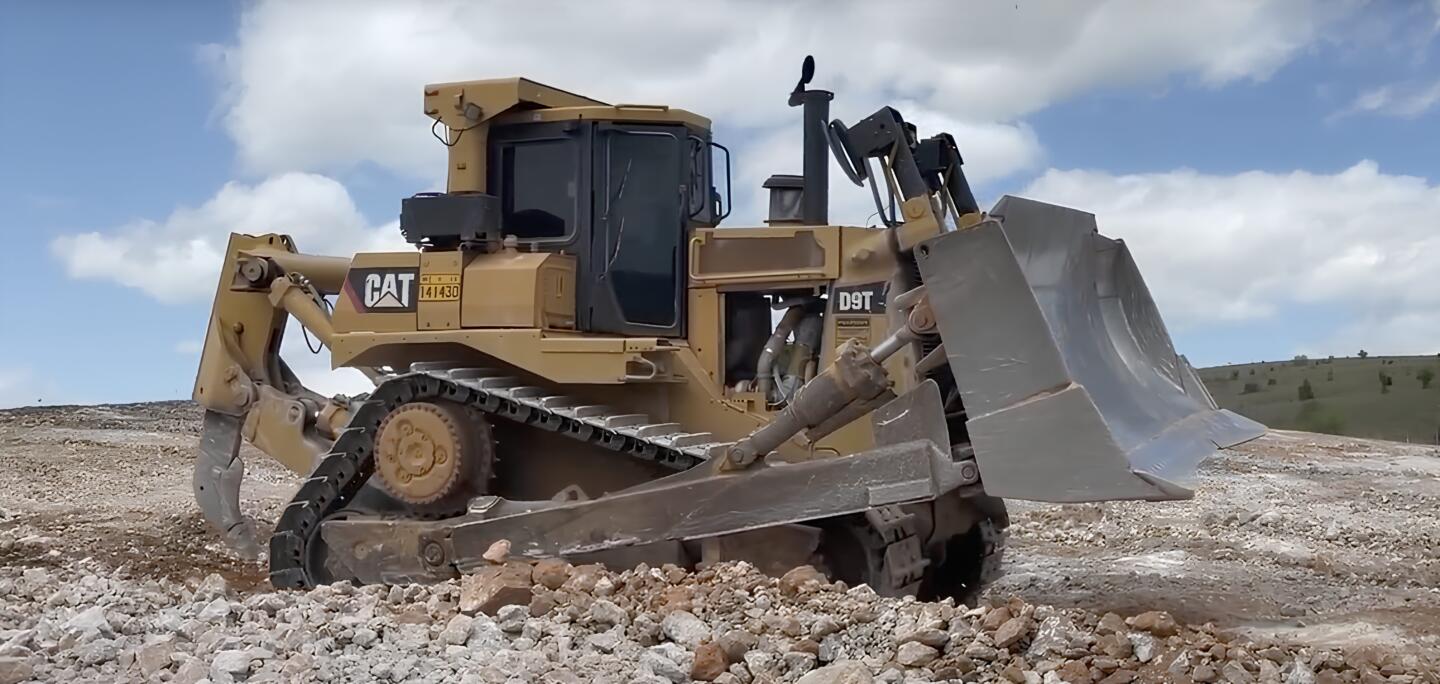
High-lift dozers feature elevated drive sprockets, which reduce wear and improve durability when working on rocky and uneven surfaces. These machines are widely used in mining and large-scale excavation projects.
High-lift bulldozers – also referred to as elevated sprocket dozers – are a subtype of crawler dozer that feature a distinct undercarriage design where the drive sprocket is mounted above the track frame rather than in line with the track rollers. This elevated sprocket design, pioneered by manufacturers like Caterpillar, is not just visually distinctive, it delivers engineering advantages in powertrain performance, durability, and maintenance.
The primary benefit of the elevated sprocket configuration is that it isolates the final drives from ground impact and track-induced shock loads. This separation improves reliability and longevity of drivetrain components, particularly in high-load and high-impact applications such as mining, heavy construction, and large-scale earthmoving.
-
Key Advantages:
- Improved Powertrain Protection: Reduces the stress transferred from the tracks to the final drives.
- Enhanced Ground Clearance: Allows better navigation over rugged or uneven terrain.
- Simplified Maintenance: Modular components and improved accessibility make servicing faster and more cost-effective.
- Optimized Weight Distribution: Helps balance load between the blade and ripper, improving pushing and ripping efficiency.
-
Typical Applications:
- Mining and quarrying operations
- Large-scale site development
- Infrastructure and road-building projects
- Hard-packed and abrasive soil environments
-
Typical Specifications:
- Operating Weight: 40 to 110+ tonnes
- Power Output: 300 to 660+ kW
- Track Type: Standard or LGP, depending on applications
While elevated sprocket dozers are typically associated with large, high-horsepower models, the concept has been applied to a range of sizes, primarily in heavy-duty machines where the benefits of reduced maintenance and increased undercarriage life provide the greatest ROI.
Famous Models
Some of the best high-performance dozers are made by several big companies around the world. Here are some of the most well-known models:
- Caterpillar D11
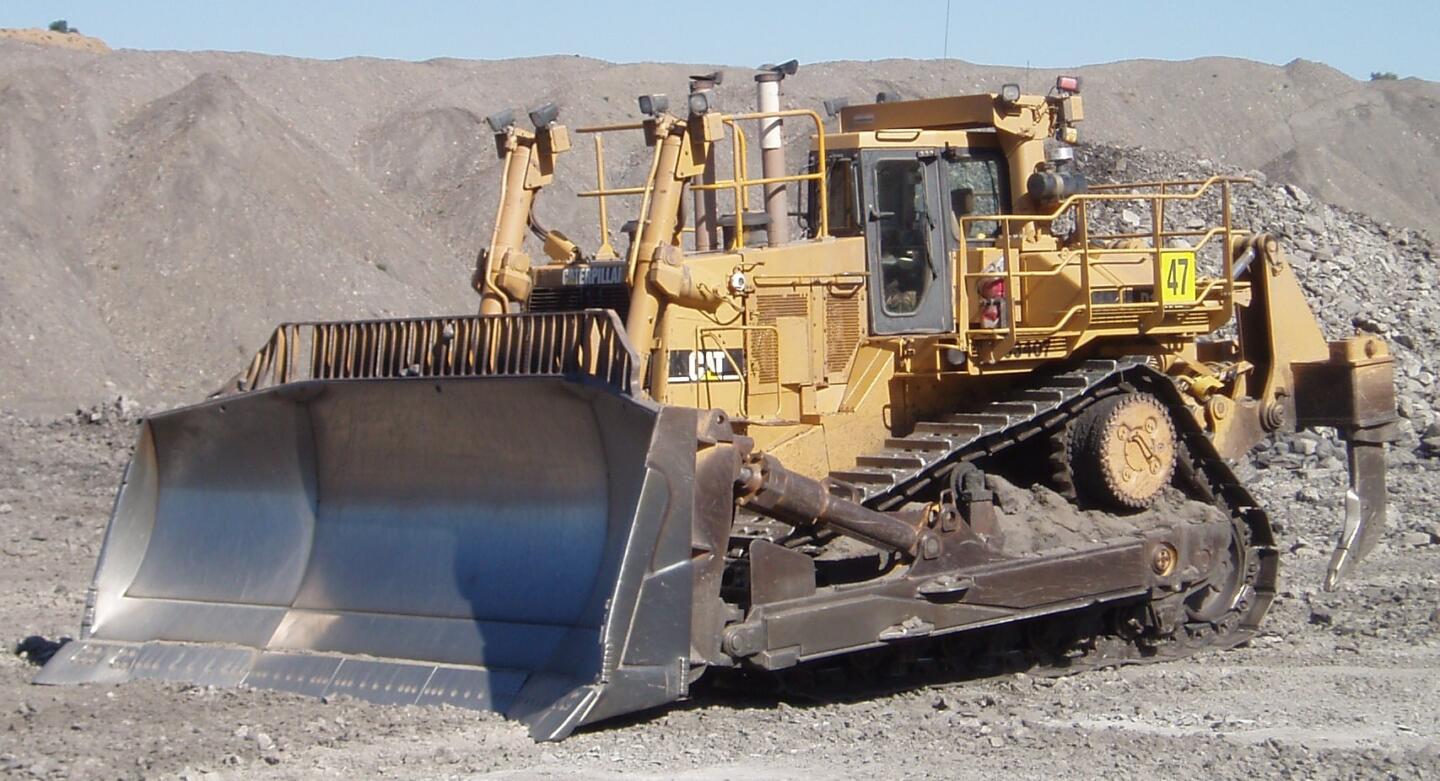
- Komatsu D375A

- John Deere 850K
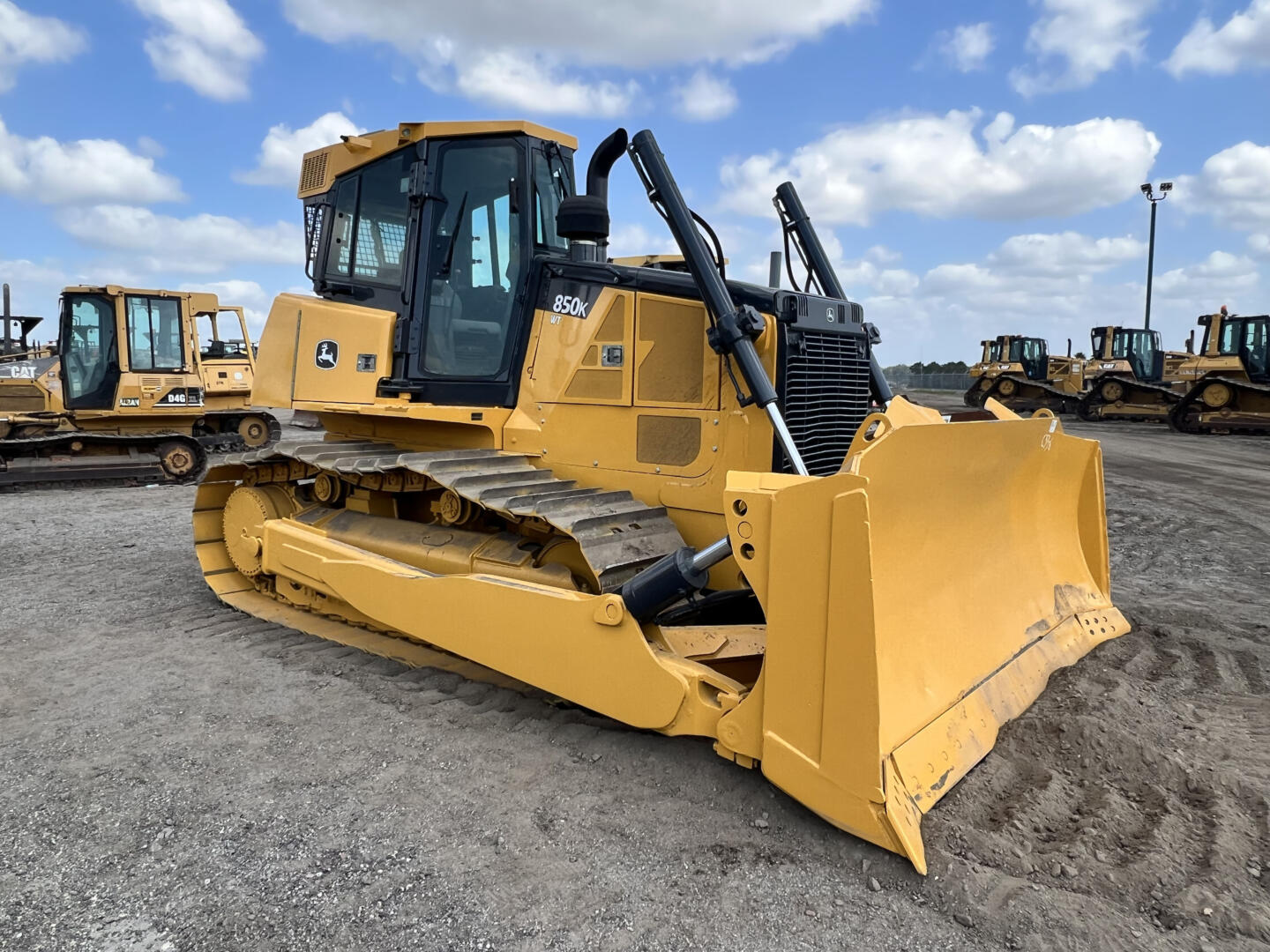
- Liebherr PR 776
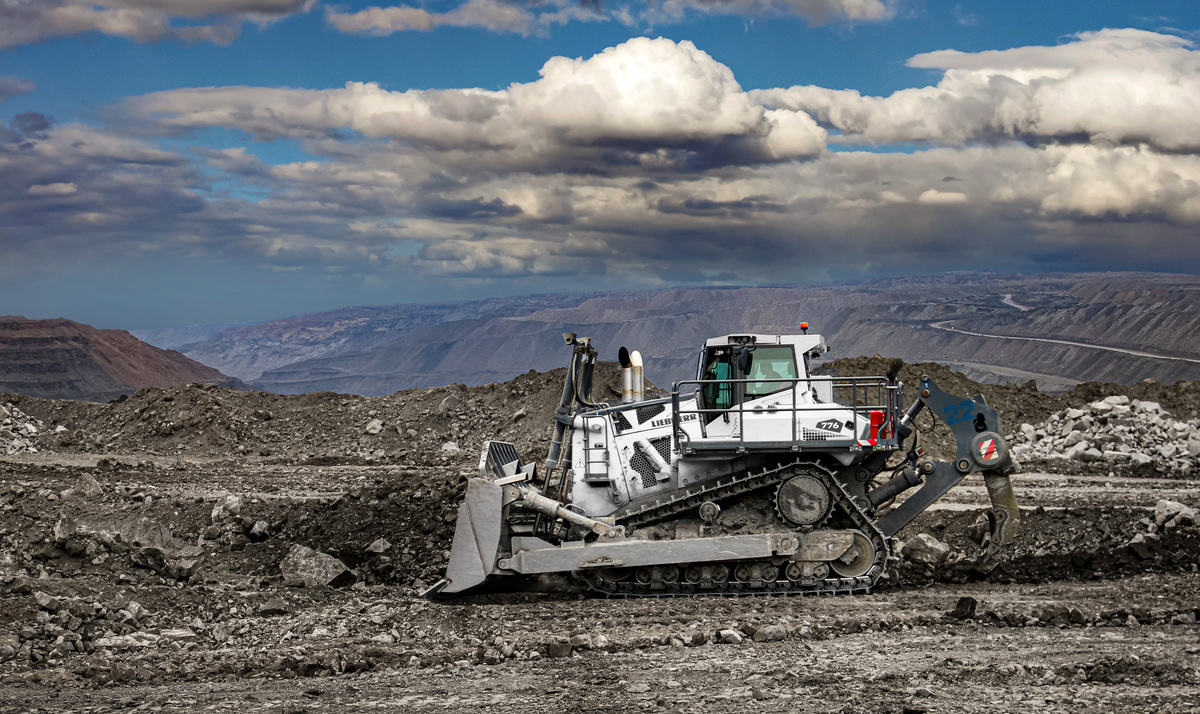
Specialty Bulldozers & Attachments
Beyond standard bulldozer types, specialized models and attachments enhance their performance for specific jobs:
Waste Handling Dozers

Dozers built for demanding applications like landfills combine strength and versatility, making them ideal for pushing waste, building cells, or spreading cover. Their robust design includes specialized seals and guarding to protect critical components from debris and contamination. Cooling systems are optimized for high-debris environments, while advanced air filtration keeps the cab clean and comfortable for the operator.
Firefighting Dozers
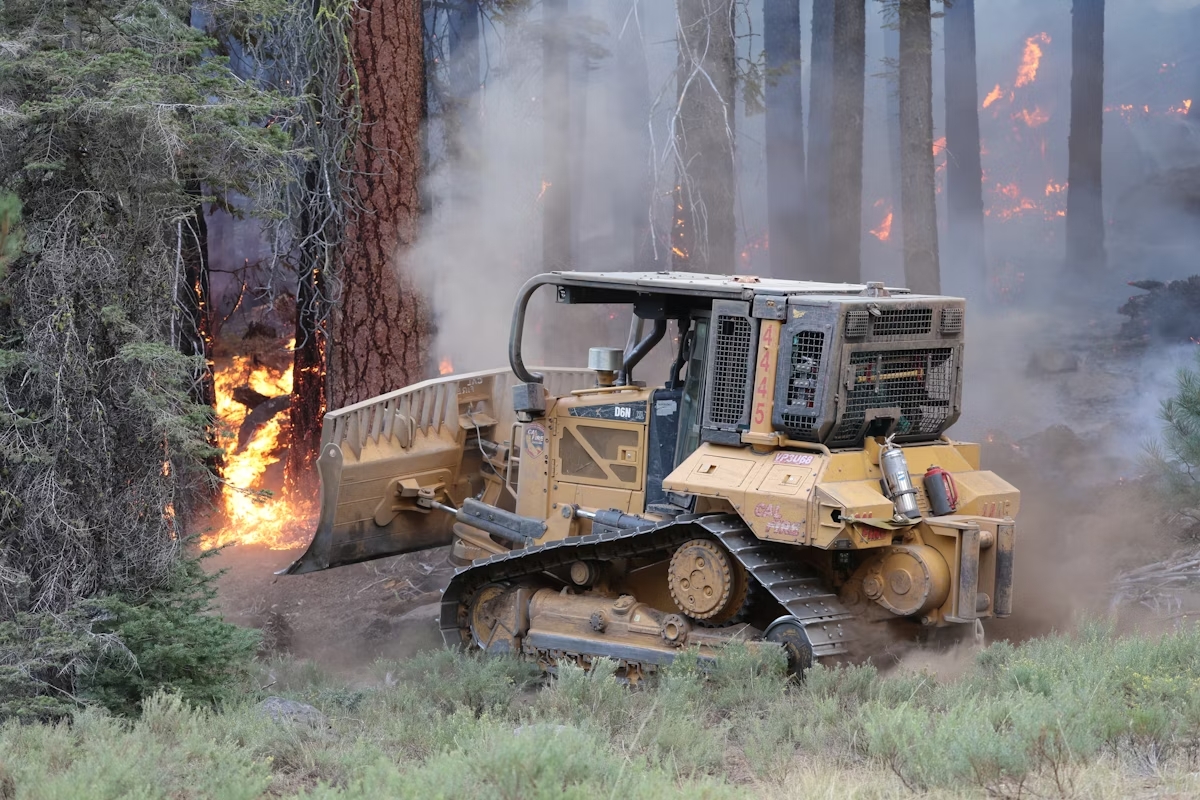
Firefighting dozers are rugged, high-performance machines specifically adapted to operate in extreme, high-risk environments. Built for rapid deployment in wildland fire zones, they combine powerful engines with excellent maneuverability, allowing operators to cut firebreaks, clear vegetation, and create safe zones with speed and precision.
These dozers often feature reinforced undercarriages, heat-resistant components, and enhanced guarding to withstand harsh terrain and proximity to flames. Cab protection is critical — many models include fire curtains, pressurized air systems, and rollover protection to safeguard operators in volatile conditions. Their reliability, durability, and ability to work in remote areas make them essential assets in wildfire suppression efforts.
Military Dozers
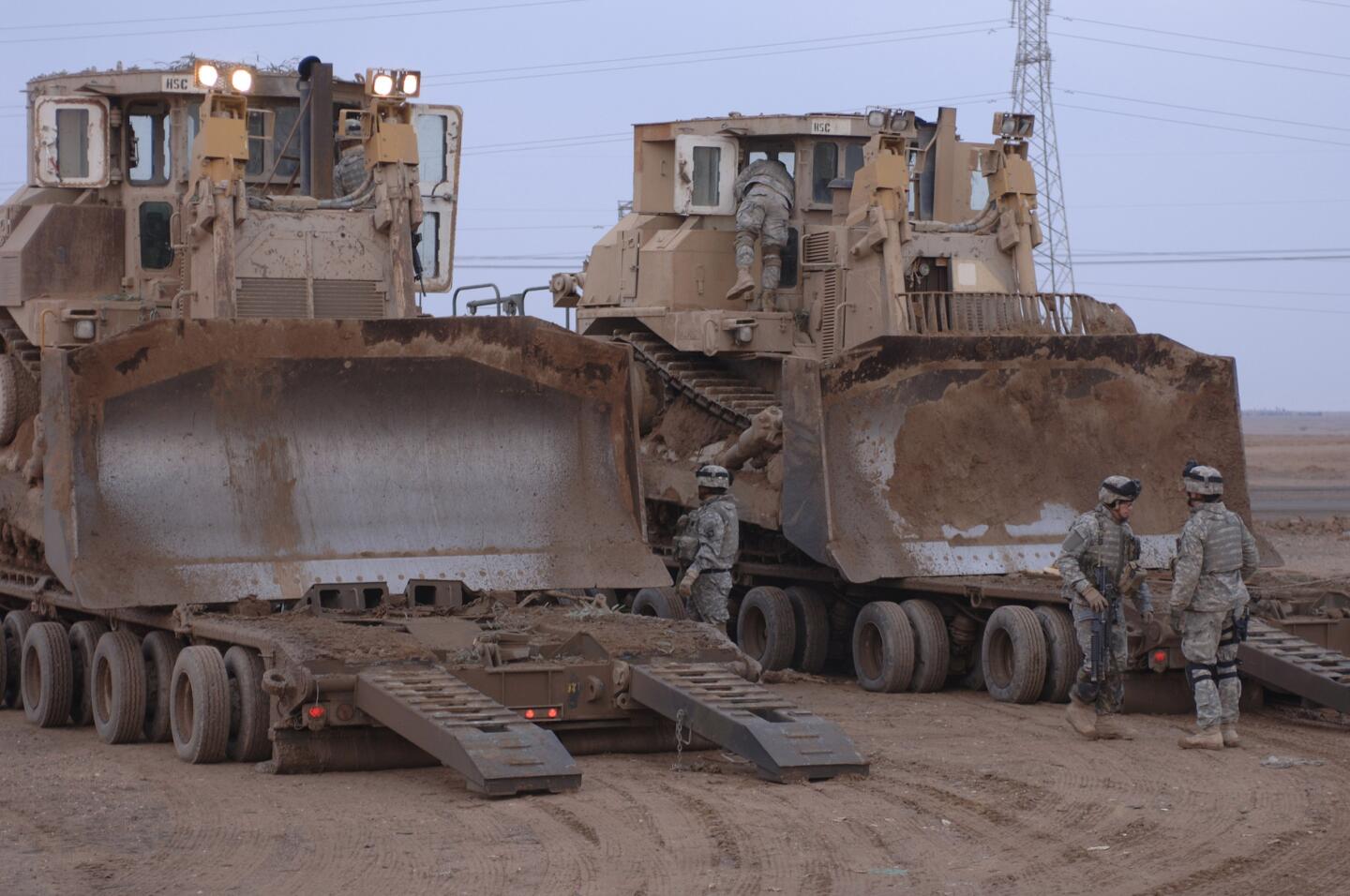
Military dozers are engineered for extreme durability, mobility, and versatility in combat and tactical support operations. Designed to operate in harsh, often unpredictable environments, these machines are used for tasks such as clearing obstacles, building fortifications, creating access routes, and repairing damaged infrastructure.
They typically feature reinforced armor plating to protect both the operator and critical systems from ballistic threats and debris. Many are air-transportable or amphibious, enabling rapid deployment across varied terrains. With robust hydraulics, high torque engines, and mission-specific attachments, military dozers play a vital role in engineering, logistics, and combat recovery missions on the battlefield.
Ripper Attachments
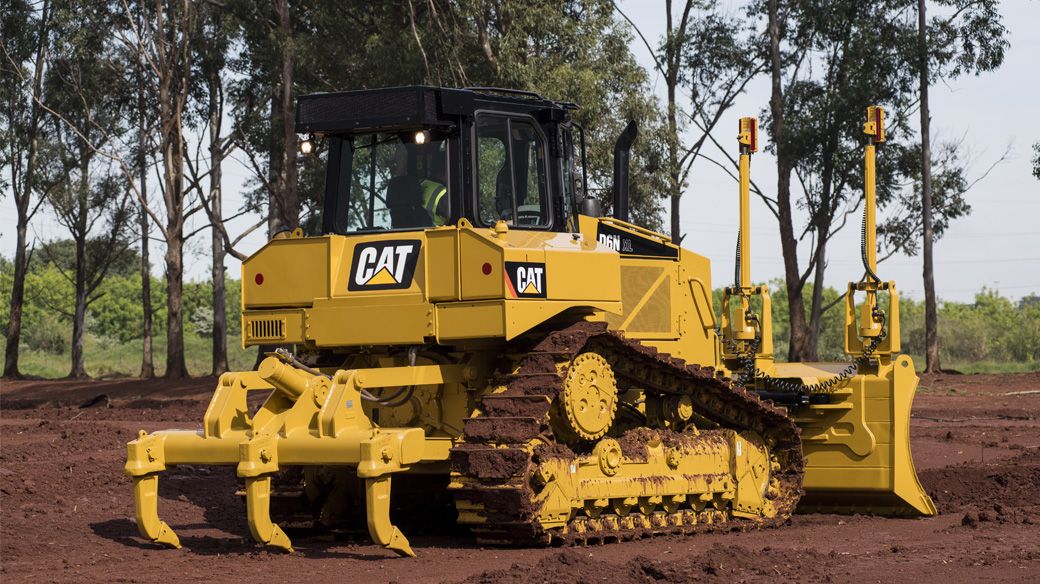
Ripper attachments are heavy-duty tools mounted at the rear of dozers, designed to break up tough ground surfaces before grading or excavation. With one to three hardened steel shanks, rippers penetrate compacted soil, rock, or frozen ground, making them essential for site preparation in demanding environments.
Their robust construction allows them to handle extreme stress, while hydraulic control gives operators precision in depth and angle. Whether loosening hardpan, tearing through asphalt, or fracturing rocky terrain, rippers enhance the dozer’s versatility and productivity, especially in mining, construction, and land-clearing operations.
In summary
Each type of bulldozer is engineered for specific terrain conditions and tasks. Choosing the right dozer depends on factors like ground conditions, project size, mobility needs, and required pushing power. With advancements in GPS automation, hybrid engines, and AI-assisted grading, bulldozers continue to evolve for greater efficiency and environmental sustainability.


 Copyright 2017-2025 All rights reserved.
Copyright 2017-2025 All rights reserved.